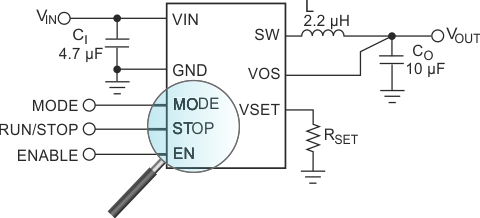SLYY203B September 2021 – April 2023 BQ25125 , LM5123-Q1 , LMR43610 , LMR43610-Q1 , LMR43620 , LMR43620-Q1 , TPS22916 , TPS3840 , TPS62840 , TPS63900 , TPS7A02
- 1
- Overview
- At a glance
- Contributors to IQ
- Why low IQ creates new challenges
- How to break low IQ barriers
-
Electrical Characteristics
- 18
- Avoiding potential system pitfalls in a low-IQ designs
- Achieving low IQ, but not losing flexibility
- Reducing external component count to lower IQ in automotive applications automotive applications
- Smart on or enable features supporting low-IQ at the Smart on or enable features supporting low-IQ at the system level
- Conclusion
- Key product categories for low IQ
Addressing switching-noise issues
When designing a high-precision data application, one priority is to control the switching noise of the DC/DC converter, especially in power-save modes with transient bursts that generate a high output voltage ripple. One way to reduce ripple is to minimize the energy package sent to the output in a switching cycle. But what if that’s not enough?
The TPS62840 buck converter, which has an IQ of 60nA, has a STOP pin that immediately stops the regulator switching after the current switching cycle, opening a window of complete switching silence (see Figure 12).
 Figure 12 Zero switching noise on the
TPS62840 from the STOP pin feature.
Figure 12 Zero switching noise on the
TPS62840 from the STOP pin feature.